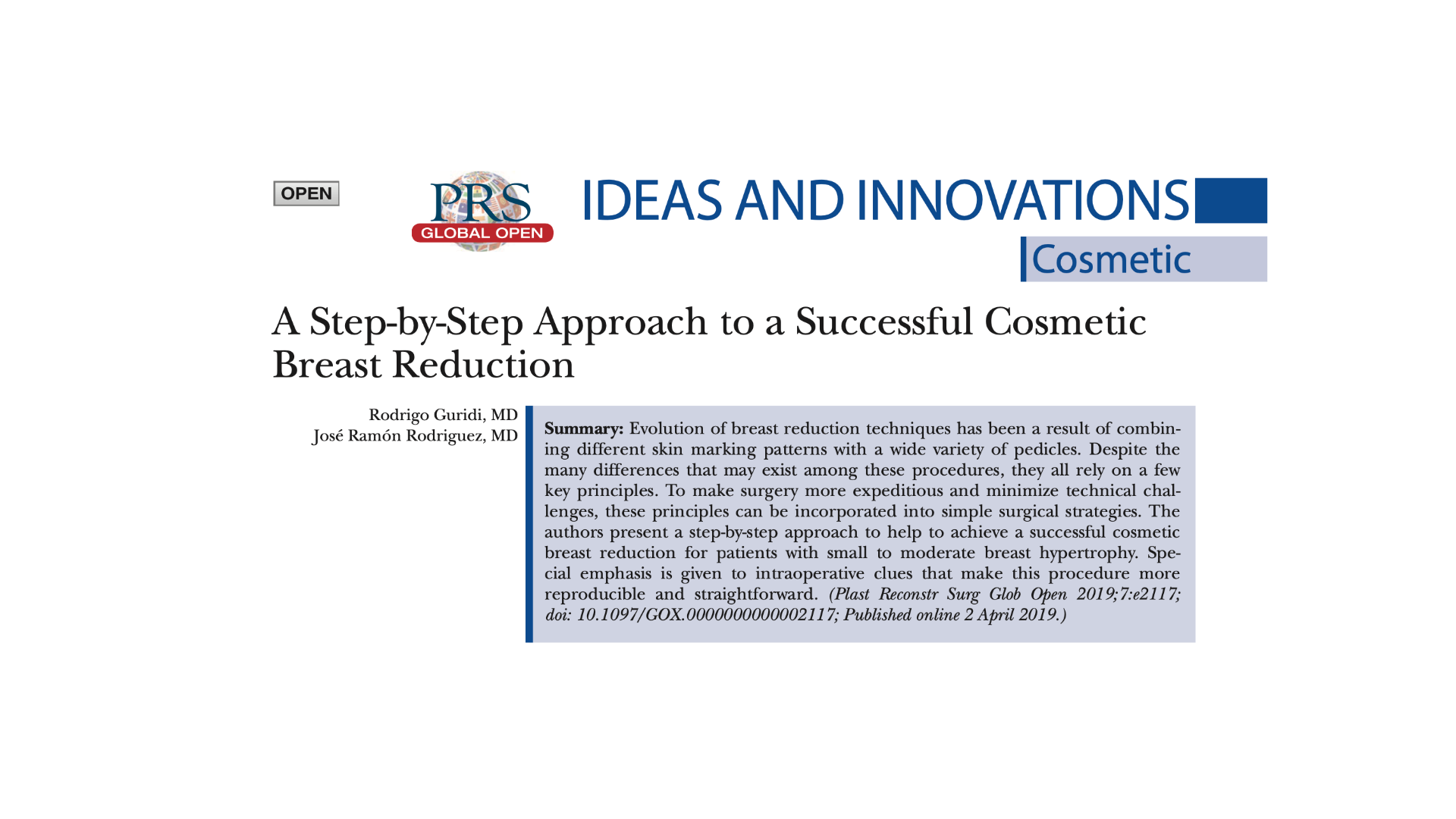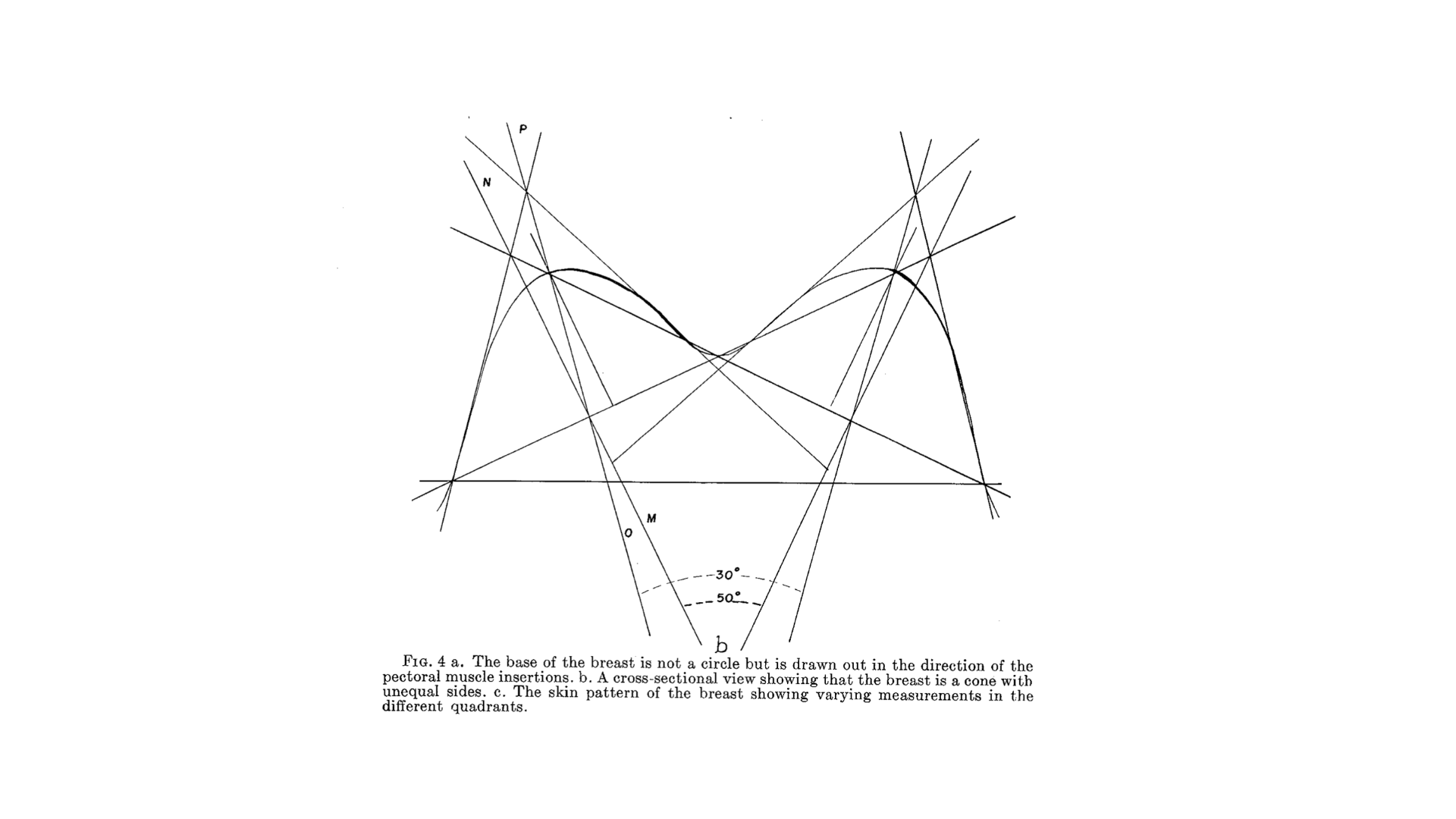
Summary Card
Level of Evidence: Case Series
This article introduces a stepwise approach for cosmetic breast reduction using a mosque dome skin marking and a superomedial pedicle, best for patients with small to moderate breast hypertrophy.
The described steps can also be used with an inferior pedicle and a Wise pattern marking. The approach includes treating the pillars, using stay sutures, shaping the lateral breast, and skin tailoring.
This strategy may be helpful for trainees or plastic surgeons early in their practice. This is discussed in detail.
Introduction
Key Point
Breast reduction removes excess tissue, relocates the nipple, minimizes scarring, and maintains sensation using various techniques and careful pre-operative planning.
Breast reduction aims to remove excess tissue, relocate the nipple, and create a pleasing shape while minimizing scarring & maintain sensation. The most common technique used is the inverted-T, inferior pedicle design with Wise pattern skin markings, but other techniques have emerged.

Adequate pre-operative markings and intraoperative strategies can simplify the procedure and achieve satisfactory results with a step-by-step approach described in this article.
Step-by-Step Approach
Key Point
Key steps are pre-operative markings, early design of pillars, key untied stay sutures, restoring lateral breast contour, pedicle suspension, NAC fixation before pillars closure, pillars closure with hanging breast, intersection suture, and horizontal skin excision.
Step 1: Symmetrical Preoperative Markings
- Mark the midline and inframammary fold.
- Medial markings must be symmetrical between both breasts. For highly asymmetric breasts, lateral markings may differ.
- Estimate the centre of the new nipple position by tracing a horizontal line 1cm over the inframammary fold and marking the breast mound at the level of the breast meridian.
- The superior border of the areola should be marked approximately 2cm above this marking, and the standard diameter for the areola is 4cm.
Step 2: Early Design of Pillars
- Before parenchymal excision, define the medial and lateral pillars by tracing 7cm vertical lines on each side from the lower limit of the new areolar opening.
- Keep the medial pillar full thickness for improved fullness and projection, and thin the lateral pillar to around 2cm.
- Excise tissue at the inferior and lateral areas along the mastectomy cleavage plane, leaving a 4-5mm adipocutaneous flap.
Step 3: Key Untied Stay Sutures
- Placed two untied nylon 3-0 stay sutures between the new areolar opening and the areola (12 o’clock, and 6 o’clock) after parenchymal excision and secured with 2 Kelly forceps.
- The stay sutures provide a 3-dimensional perspective of the new breast by pulling towards the zenith, aiding in size estimation between both breasts, and helping during pillars closure.
Step 4: Restoring Lateral Breast Contour
- A curvilinear piece of glandular tissue is excised from the caudal part of lateral pillar, leaving a thin dermal flap. This is to restore the natural lateral breast contour.
- The location and extent of excision is determine by outlining the ideal lateral breast curvature on the skin.
- Consider adding liposuction to the lateral breast in large reductions to avoid extended horizontal scars and improve shape at the end of the procedure.
Step 5: Pedicle Suspension
- Rotate or displace the pedicle superiorly without tension.
- Fix the pedicle to the pectoralis fascia using 2-3 nonabsorbable sutures in the superior limit of the upper pole dissection.
- Keep the cephalic dissection limit around the most superior extent of the breast footprint.
Step 6: NAC Fixation before Pillars Closure
- Suture the NAC to the new areolar opening before closing the pillars.
- This reduces tension during closure and prevents undesired downward traction of the nipple.
- It also helps to avoid abnormal protrusion of the areola after breast assembly.
Step 7: Pillars Closure with Hanging Breast
- Keep traction of the breast mound toward the zenith with an assistant.
- Close pillars using 2 layers of nonabsorbable sutures.
- Hanging the breast during closure exposes the correct alignment of the pillars and often results in increased projection and better shape.
Step 8: Intersection Suture
- Place a stay suture at the intersection between the meridian and both medial and lateral flaps.
- The suture assists with tailoring of skin excess
- Keep the suture in place until breast closure is completed.
Step 9: Horizontal Skin Excision
- Horizontal skin excess is removed at the end of the procedure, reducing final scar length.
- Redundant skin is incised at the superior border, forming two inferiorly based skin flaps.
- With assistant pushing the breast caudally, use the the natural crease of the IMF as a guide for determining the amount of skin excision needed.
Article Discussion
Key Point
This article presents the importance of symmetrical pre-operative markings, stay sutures for size estimation, and lateral breast contouring in breast reduction surgery. Positives include a stepwise approach and an excellent marking video. Limited by its applicability to small to moderate-sized reductions, and potential changes to a practice involving precise marking, pedicle suspension, and lateral breast contouring.
3 Learning Points
- Importance of keeping medial marking symmetrical.
- Use of stay sutures around NAC to improve size estimation.
- Lateral breast contouring
3 Discussion Points: Positives, Limitations
- Nice stepwise approach for cosmetic breast reduction using a mosque dome skin marking and a superomedial pedicle.
- This is limited to small to moderate sized reduction – might be less applicable in the UK.
- Excellent video on marking the breast.
3 Ways to change your practice.
- Precise marking is essential.
- Pedicle suspension
- Lateral breast contouring
3 Recommended Reads
- Hall-Findlay EJ, Shestak KC. Breast reduction. Plast Reconstr Surg. 2015;136:531e–544e.
- Andrades P, Prado A. Understanding modern breast reduction techniques with a simplified approach. J Plast Reconstr Aesthet Surg. 2008;61:1284–1293.
- Davison SP, Mesbahi AN, Ducic I, et al. The versatility of the superomedial pedicle with various skin reduction patterns. Plast Reconstr Surg. 2007;120:1466–1476.


